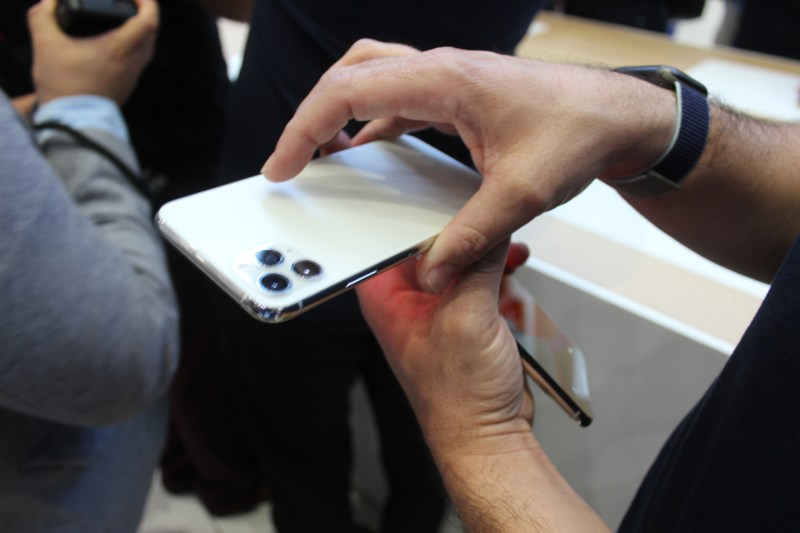To no one’s surprise, Apple launched its flagship smartphones, the iPhone 11 Pro and the iPhone 11 Pro Max at its By Innovation Only event in Cupertino today. These high-end smartphones take camera technology to a new level, but they notably lack the 5G connectivity that is beginning to crop up on competitors’ devices.
We got a hands-on demo of the smartphones, which you can see in the video. The iPhone 11 Pro will be available on September 20 for $999, while the iPhone 11 Pro Max will be available on the same day for $1,099.
These are steep prices for phones that will make you look cool during the holidays, even with their improved cameras and other bells and whistles. But is it worth the premium, given that other phone makers will be launching 5G smartphones with the much faster internet users are soon going to crave?
Patrick Moorhead, analyst at Moor Insights & Strategy, thinks the lack of 5G will be a liability in countries like China.
June 5th: The AI Audit in NYC
Join us next week in NYC to engage with top executive leaders, delving into strategies for auditing AI models to ensure fairness, optimal performance, and ethical compliance across diverse organizations. Secure your attendance for this exclusive invite-only event.
“I know that 5G isn’t ready for everybody yet in the United States,” he said. “In China in the fourth quarter, or the first quarter of next year, it’s going to be a must-have feature. Qualcomm announced 150 handsets that are going to be 5G-enabled. And I do think that it’s going to hurt Apple, not in the mid-range, but at the high end. And at a time when Apple’s losing market share, this is not going to be good for them.”

Above: iPhone 11 Pro Max
In the meantime, as you can see in the video, Apple is happy to talk about its great cameras. The iPhone 11 Pro and iPhone Pro Max come with three 12-megapixel ultra-wide cameras. Rather than just stepping back from your photo subject, now you can zoom out with the ultra-wide lens, which gives you greater flexibility when you have to capture a shot in the moment.
You can use the wide or telephoto modes for portrait photos. The new cameras also have a large f/2.0 aperture, which brings in 40% more light than the phones from last year.
These smartphones replace last year’s iPhone X and iPhone XS, while the cheaper $700 iPhone 11 replaces the iPhone XR. The new phones have a “surgical-grade stainless steel” case and matte finish that comes in midnight green, space gray, white/silver, and gold steel finishes.
With a feature dubbed deep fusion, the phone will take nine photos from the three cameras and stitch them together into one image. You can record footage from multiple cameras at the same time.
The Pro and Pro Max models will also feature Night Mode, which lets you take high-quality photos in low-light or mixed light conditions. You can also take slow-motion selfies, or “slowfies.” Face ID will work better, thanks to the three photos, so you can unlock your phone faster using your face.
Like the iPhone 11, the Pro and the Pro Max use the A13 Bionic processor, which delivers better CPU and GPU performance, as well as good machine learning processing — all while using less power.
The Pro has a 5.7-inch screen and the Pro Max a 6.5-inch screen. Both are Super Retina XDR OLED screens with a 2 million to 1 contrast ratio and up to 1,200 nits of brightness. The phones support 802.11ax Wi-Fi 6 wireless networking.
Overall, Apple says the Pro will get four more hours of battery life than last year’s iPhone XS, and the Pro Max will get five hours more battery than the XS Max. Preorders start on Friday, and the phones ship on September 20.

